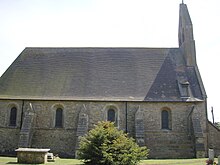| Witham Charterhouse | |
|---|---|
 Parish church of the Blessed Virgin Mary, St John Baptist and All Saints, Witham Friary, formerly lay brothers' church of the Charterhouse | |
| Religion | |
| Affiliation | Carthusian |
| Year consecrated | 1178/1179 |
| Status | abandoned |
| Location | |
| Location | Witham Friary, Somerset, England |
| Geographic coordinates | 51°09′47″N2°21′58″W / 51.1631°N 2.3660°W |
Witham Charterhouse, also Witham Priory, at Witham Friary, Somerset, was established in 1178/79, the earliest of the ten medieval Carthusian houses (charterhouses) in England. It was suppressed in the Dissolution of the Monasteries in 1539.

